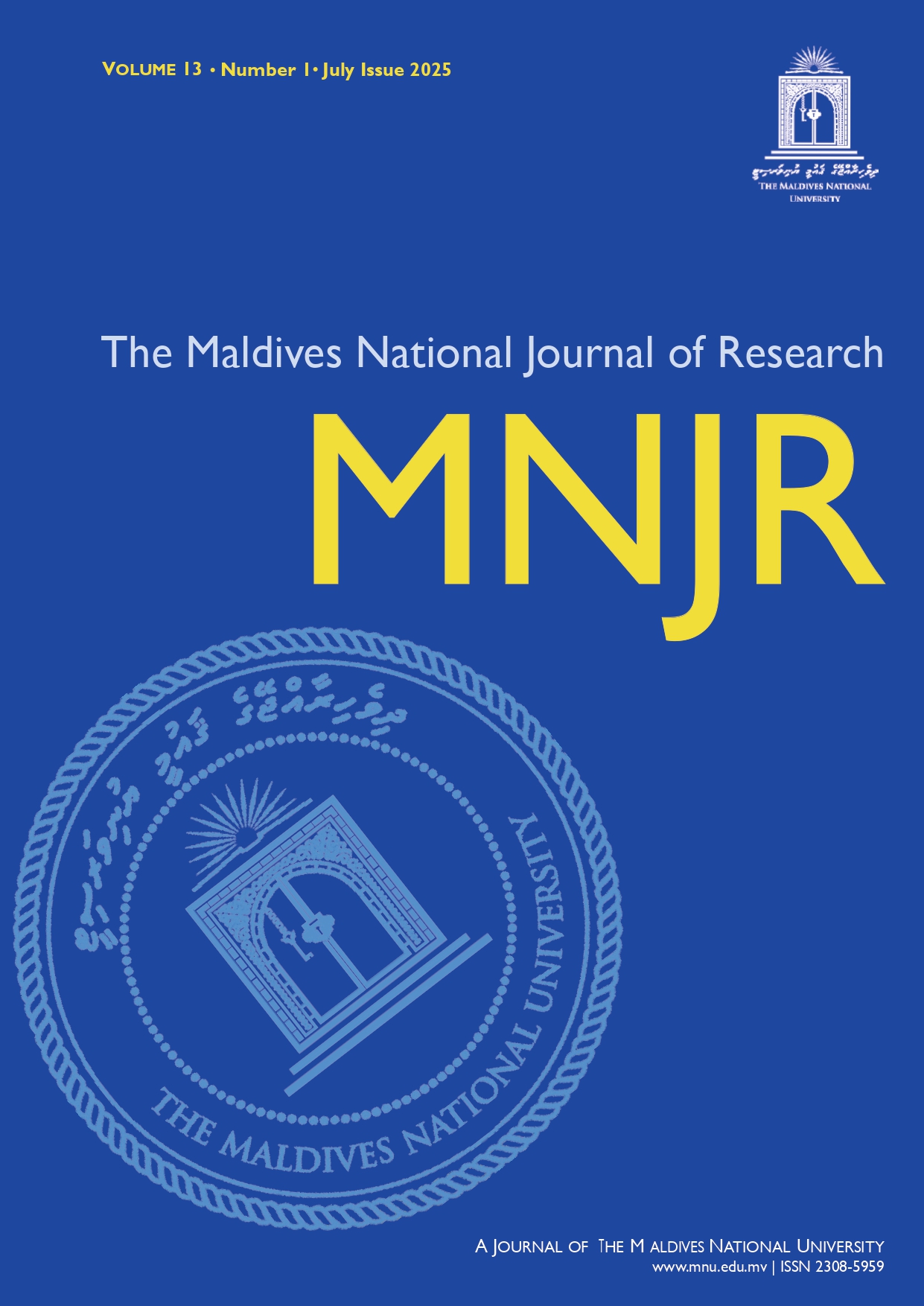Abstract
The geographical distribution of islands in the Maldives presents unique water management challenges. Despite similarities, supply water demand patterns vary across islands due to factors such as consumer behaviour, availability of alternative water sources (groundwater, rainwater), and urban density. Current design practices rely on standardised per capita values, potentially leading to over- or under-sized water systems. This research proposes a data-driven approach to establish water demand patterns that consider island characteristics. Operational data from 2023 for three Maldivian islands —HDh. Finey, M. Mulah, and Gn. Fuvahmulah —are analysed, representing contrasting land areas, populations, and urban environments. The analysis shows distinct peak demand times and minimum night flow patterns for the three islands. While the peak demand for the Gn. Fuvahmulah is higher (25 m3/hr) compared to HDh. Finey (10 m3/hr), the per capita water demand is much higher for HDh. Finey(24.45 L/capita/hr) compared to Gn. Fuvahmulah (2.72 L/capita/hr). By identifying the influence of different factors on water demand, the research aims to provide beneficial insights for policymakers, designers, and operators of water management facilities. This information can aid to optimise future water system design, minimise investment costs and enable long-term sustainability. The insights from this study can help to avoid over- or under-capacity developments, leading to lower operational costs and increasing water security for island communities.
References
Alawad, S. M., Mansour, R. B., Al-Sulaiman, F. A., & Rehman, S. (2023). Renewable energy systems for water desalination applications: A comprehensive review. Energy Conversion and Management, 286, 117035. https://doi.org/10.1016/j.enconman.2023.117035
Alkasseh, J. M. A., Adlan, M. N., Abustan, I., Aziz, H. A., & Hanif, A. B. M. (2013). Applying minimum night flow to estimate water loss using statistical modeling: A case study in Kinta Valley, Malaysia. Water Resources Management, 27(5), 1439–1455. https://doi.org/10.1007/s11269-012-0247-2
AL-Washali, T., Sharma, S., AL-Nozaily, F., Haidera, M., & Kennedy, M. (2018). Modelling the leakage rate and reduction using minimum night flow analysis in an intermittent supply system. Water, 11(1), 48. https://doi.org/10.3390/w11010048
Avni, N., Fishbain, B., & Shamir, U. (2015). Water consumption patterns as a basis for water demand modeling. Water Resources Research, 51(10), 8165–8181. https://doi.org/10.1002/2014WR016662
Canteiro, M., Cotler, H., Mazari-Hiriart, M., Babinet, N., & Maass, M. (2024). Natural dynamics and watershed approach incorporation in urban water management: A scoping review. PLOS ONE, 19(8), e0309239. https://doi.org/10.1371/journal.pone.0309239
Carriço, N., Ferreira, B., Antunes, A., Caetano, J., & Covas, D. (2023). Computational tools for supporting the operation and management of water distribution systems towards digital transformation. Water, 15(3), Article 3. https://doi.org/10.3390/w15030553
Fthenakis, V., Yetman, G., Zhang, Z., Squires, J., Atia, A. A., Alarcón-Padilla, D.-C.,Palenzuela, P., Vicraman, V., & Zaragoza, G. (2022). A solar energy desalination analysis tool, sedat, with data and models for selecting technologies and regions. Scientific Data, 9(1), 223. https://doi.org/10.1038/s41597-022-01331-4
GCF. (2024, March 22). From scarcity to sustainability: Maldives’ ambitious water security project. Green Climate Fund; Green Climate Fund. https://www.greenclimate.fund/story/ scarcity-sustainability-maldives-ambitious-water-security-project
Han, M., & Ki, J. (2010). Establishment of sustainable water supply system in small islands through rainwater harvesting (RWH): Case study of Guja-do. Water Science and Technology, 62(1), 148–153. https://doi.org/10.2166/wst.2010.299
Hayslep, M., Keedwell, E., Farmani, R., & Pocock, J. (2024). An explainable machine learning approach to the prediction of pipe failure using minimum night flow. Journal of Hydroinformatics, 26(7), 1490–1504. https://doi.org/10.2166/hydro.2024.204
Jaleel, M. I., Ibrahim, S. A., Hussain, A., Mustafa, M., & Pathirana, A. (2020). A Screening approach for assessing groundwater quality for consumption in small islands: Case study of 45 inhabited islands in the Maldives. Water, 12(8), 2209. https://doi.org/10.3390/ w12082209
Kingdom, B., Liemberger, R., & Marin, P. (2006). The challenge of reducing non-revenue water (NRW) in developing countries how the private sector can help: A look at performance-based service contracting. World Bank, Water Supply And Sanitation Sector Board Discussion Paper Series, 52.
Liemberger, R., & Wyatt, A. (2019). Quantifying the global non-revenue water problem. Water Supply, 19(3), 831–837. https://doi.org/10.2166/ws.2018.129
MBS. (2022). Census 2022. https://census.gov.mv/2022
MLSA. (2024). Maldives Land and Survey Authority—One Map. https://onemap.mv/
Negharchi, S. M., & Shafaghat, R. (2020). Leakage estimation in water networks based on the BABE and MNF analyses: A case study in Gavankola village, Iran. Water Supply, 20(6), 2296–2310. https://doi.org/10.2166/ws.2020.137
Pacchin, E., Gagliardi, F., Alvisi, S., & Franchini, M. (2019). A Comparison of short-term water demand forecasting models. Water Resources Management, 33(4), 1481–1497. https://doi.org/10.1007/s11269-019-02213-y
Rathnayaka, K., Malano, H., & Arora, M. (2016). Assessment of sustainability of urban water supply and demand management options: A comprehensive approach. Water, 8(12), Article 12. https://doi.org/10.3390/w8120595
Reyes, M., Petričić, A., Trifunović, N., & Sharma, S. (2019). Water management atrategies using multi-criteria decision analysis in Santa Cruz Island (Galapagos Archipelago). Scientific Review, 56, 112–123. https://doi.org/10.32861/sr.56.112.123
Rousso, B. Z., Do, N. C., Gao, L., Monks, I., Wu, W., Stewart, R. A., Lambert, M. F., & Gong, J. (2024). Transitioning practices of water utilities from reactive to proactive: Leveraging Australian best practices in digital technologies and data analytics. Journal of Hydrology, 641, 131808. https://doi.org/10.1016/j.jhydrol.2024.131808
Tortajada, C. (2006). Water Management in Singapore. International Journal of Water Resources Development, 22(2), 227–240. https://doi.org/10.1080/07900620600691944
